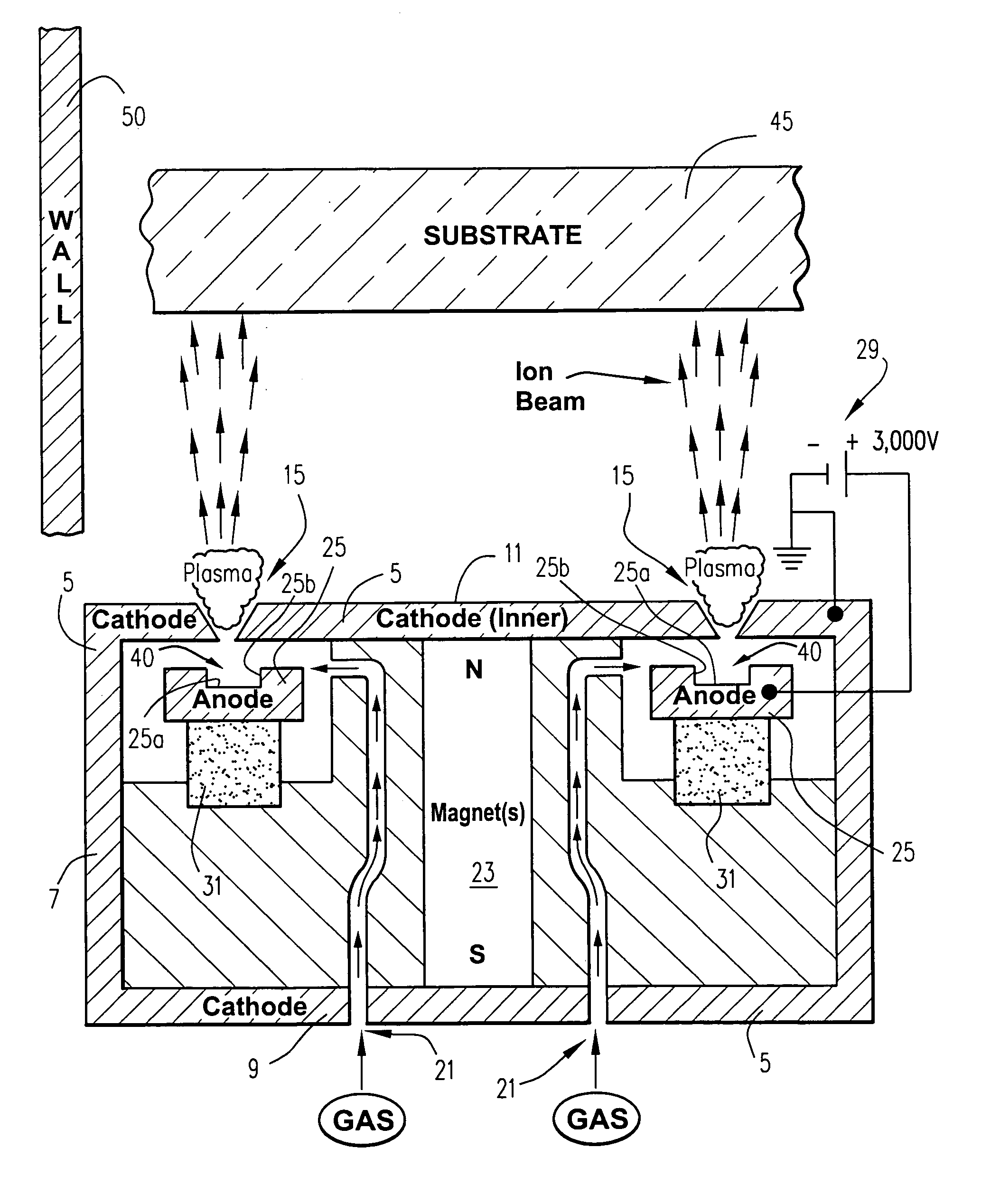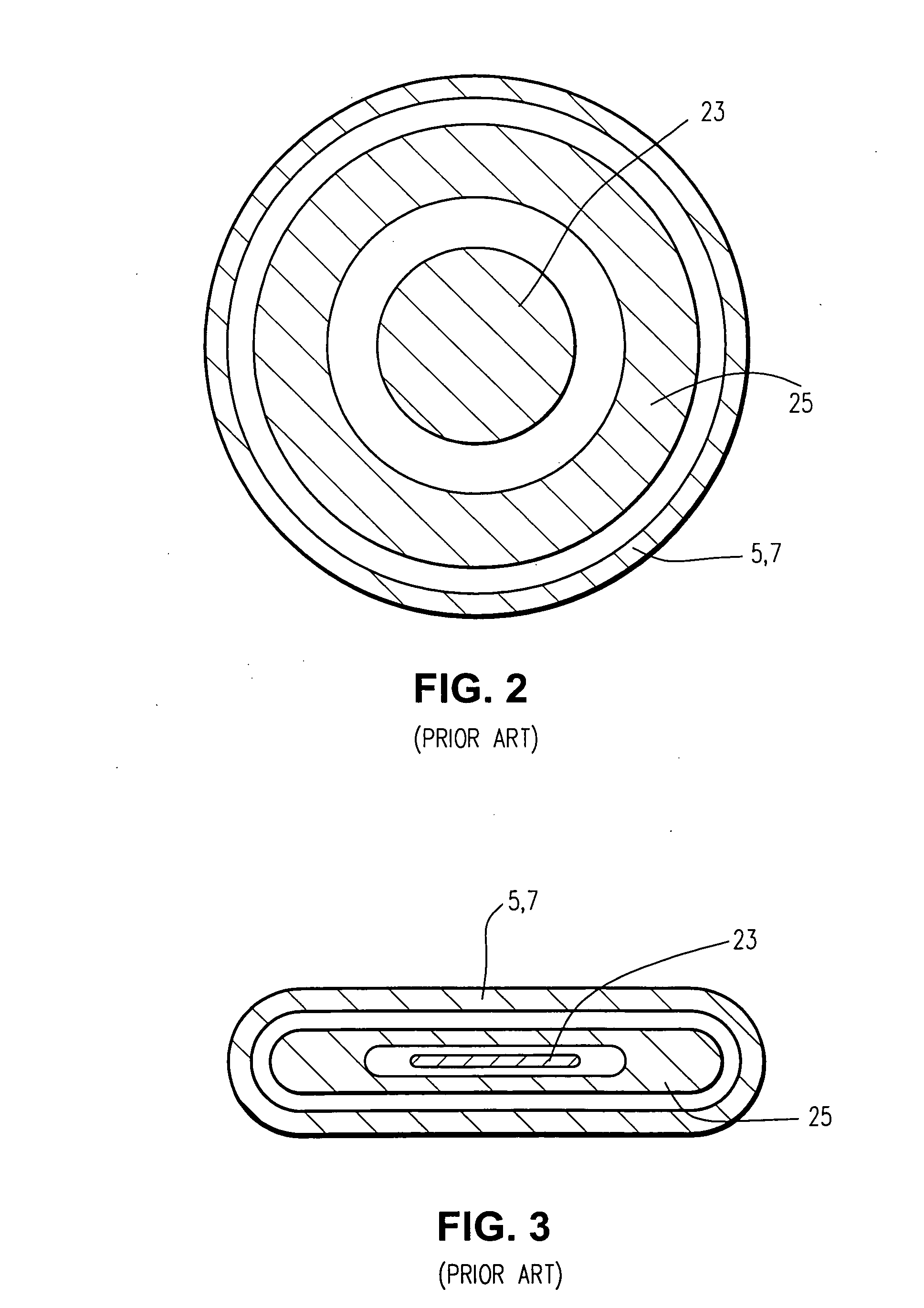Ion source with recess in electrode
a technology of electrodes and ion sources, applied in the field of ion sources, can solve the problems of reducing the associated ion energy, limiting and less focused or otherwise less efficient ion beams, so as to reduce energy efficiencies, reduce energy consumption, and limit the overall energy efficiency of the ion sour
- Summary
- Abstract
- Description
- Claims
- Application Information
AI Technical Summary
Benefits of technology
Problems solved by technology
Method used
Image
Examples
Embodiment Construction
[0022]Referring now more particularly to the accompanying drawings in which like reference numerals indicate like parts throughout the several views.
[0023]FIG. 4 is a cross sectional view of a cold cathode closed-drift ion source according to an example embodiment of this invention. The example embodiment shown in FIG. 4 functions similarly in many respects to the conventional ion source depicted with reference to FIGS. 1-3, and for this reason like references numerals are used in FIGS. 1-5.
[0024]In the FIG. 4 example embodiment ion source, the slit / aperture (or discharge gap) 15 is formed in the cathode 5, so that the cathode has inner and outer portions as shown in the figure. Anode 25 is located below the cathode 5 and / or below the discharge gap or slit 15 defined therein. As shown in FIGS. 2-3, the anode 25 may be circular, oval, or otherwise shaped as viewed in a top-cross-sectional perspective in different example embodiments of this invention; and the discharge gap or slit 15...
PUM
| Property | Measurement | Unit |
|---|---|---|
| angle | aaaaa | aaaaa |
| angle | aaaaa | aaaaa |
| depth | aaaaa | aaaaa |
Abstract
Description
Claims
Application Information
 Login to View More
Login to View More - R&D
- Intellectual Property
- Life Sciences
- Materials
- Tech Scout
- Unparalleled Data Quality
- Higher Quality Content
- 60% Fewer Hallucinations
Browse by: Latest US Patents, China's latest patents, Technical Efficacy Thesaurus, Application Domain, Technology Topic, Popular Technical Reports.
© 2025 PatSnap. All rights reserved.Legal|Privacy policy|Modern Slavery Act Transparency Statement|Sitemap|About US| Contact US: help@patsnap.com



